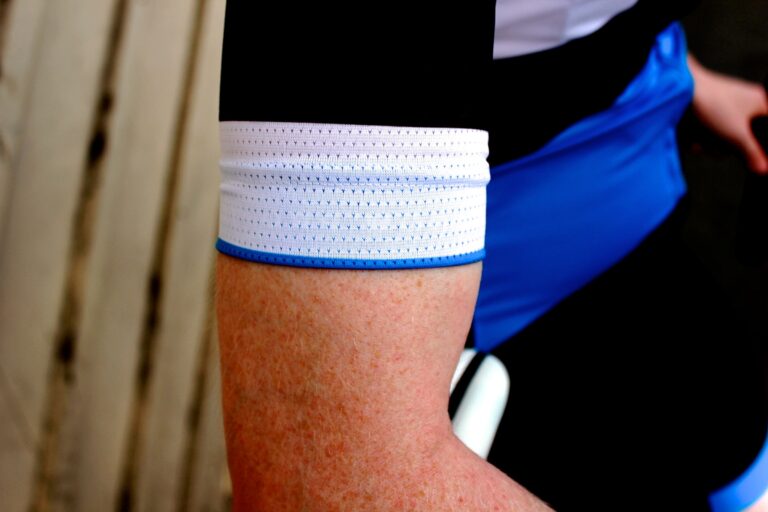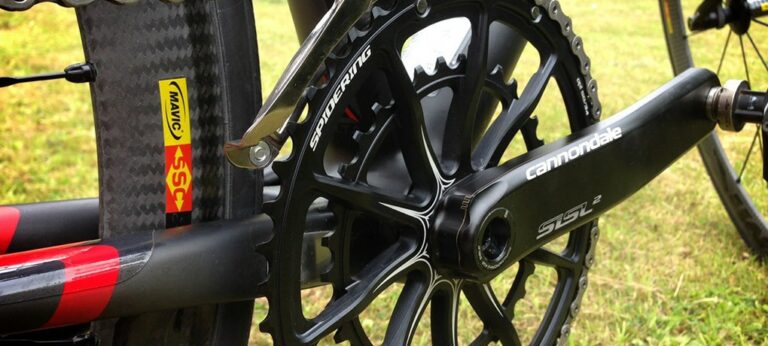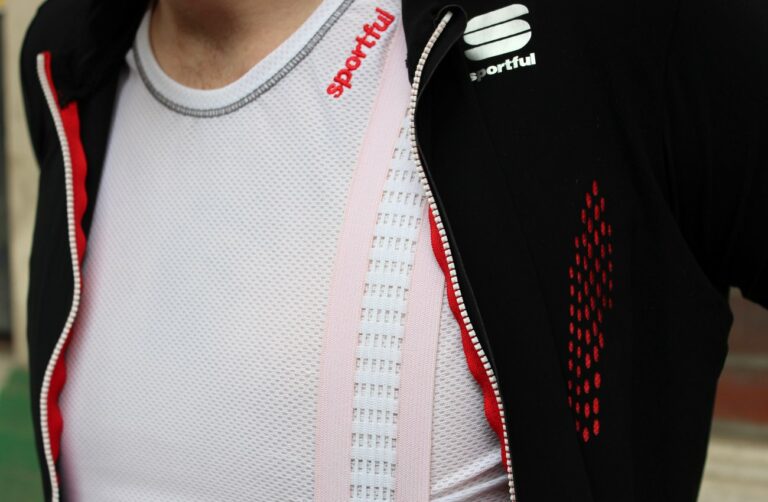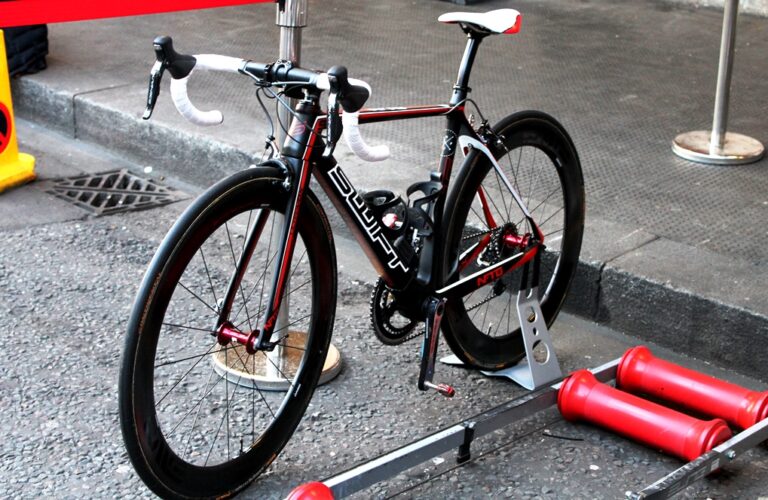The Bianchi Infinito CV is a capable all-rounder – stable, comfortable, and, when required to do so, able to show a turn of speed on flat roads. It is not a featherweight, turn-on-a-dime race bike, but neither does it have the barriers to comfort typically associated with such machines, and in any case, Bianchi has that market covered with its Oltre XR2 and Sempre Pro offerings.
Physicists tell us the universe is constantly expanding, but perhaps the cosmos has a rival in the endurance bike market: machines intended to deliver comfort as well as speed, with the new Canyon Endurace the latest to enter the ring. The Infinito CV, Bianchi’s candidate in a constituency of increasing importance to bike manufacturers as the sport’s popularity among riders no longer in the first flush of youth continues to grow, has many of the distinguishing features of the breed, including a short toptube and tall-ish headtube.

Its second, significant weapon in the battle to dim the harshness of carbon frames – the lauded ‘Countervail’ vibration damping technology – is also largely effective, and combined with the geometry, makes the Infinito CV a bike that can be ridden in comfort all day.
The chassis
Our first acquaintance with the Infinito CV was made last year on the smoother roads of Tuscany and the initial favourable impressions formed on those more forgiving surfaces were largely borne out on the rural roads of southern England. The Inifinito CV’s ability to dissipate vibration is impressive, rather than transformative.
We found the Infinito CV at its best on long, flat roads, where we were able to settle in on the shallow drops, push back against the raised and rounded tail of the Aliante saddle, and press on with the feeling that the bike was taking at least an equal share in the business of maintaining a stable position
The ride quality, as might be expected, is still far removed from materials possessed of characteristics that might be described as more ‘naturally’ inclined to comfort, such as steel or titanium. This is not to compare apples with apples, however. Within the sphere of composite frames, the Infinito CV deals with road chatter effectively. It is also significantly lighter than many metal frames. Our Park digital scale recorded the weight of the complete bike at 7.37kg, sans pedals.

The Infinito CV’s geometry did as much to provide a comfortable ride. Billed by Bianchi as ‘Coast 2 Coast’, and so developed with long rides in mind, it was largely successful in placing us in a position that was easy on the back and shoulders and so a suitable complement to the vibration cancelling qualities of the lay-up already discussed.
The compact position achieved by the short toptube (a virtual measurement of 518mm on our 53cm test bike) and tall-ish headtube (155mm – some 25mm higher than its more race-oriented Sempre Pro sister, tested last year) encouraged extended periods on the drops, rather than turning us into a windbreak.
A final word on the chassis: Bianchi is, of course, Italian, and the Infinito CV, is, of course, easy on the eye. Concessions to comfort have not been made at the expense of aesthetics. Function is not enough in Belle Italia – form is of equal importance. The Infinito CV’s muscular styling – the huge, pyramidal downtube, the heavily-sculpted, hour glass profiled head tube, the beefy, Oltre-esque junction of headtube and fork crown – is refreshingly atypical of an endurance bike.
The components
The Infinito CV comes in a host of different configurations, with components from Campagnolo also on the menu. Our test bike is the Ultegra edition: a groupset to which our repeated exposure on a host of test bikes has established it as the standard by which others must be judged. Familiarity breeds contempt, they say, but it would be a harsh judge who took issue with Shimano’s second-from-top offering. The shifting on our Infinito CV was (as expected) excellent, the braking reliable, and the four-arm chainset a significant aesthetic bonus.
The deployment of a 31.6mm seatpost was a little baffling, given the consensus that slimmer posts offer greater compliance (see Scott’s Solace, Cannondale’s Synapse, Specialized’s Roubaix and others). Why not a 27.2mm?
Our test machine rolled on Fulcrum’s Racing Fives, a 1645g aluminium hoop that while neither the lightest or most sophisticated on the market, struck us as a sensible match for the frame and performed well enough. The Hutchinson Fusion 3 tyres, however, were something and nothing: neither the soft, grippy rubber of summer, nor the voluminous covers that might have provided a more thoughtful selection for a machine with comfort at the top of its list of desirable characteristics.

The FSA Energy handlebar was a more considered inclusion, and the shallow 125mm drop combined with the geometrical features discussed above to allow us to spend far longer than usual on the drops. This had been the case on our Tuscan experience, too. The Fizik Aliante, while supplying further evidence of a high quality spec and a determination on Bianchi’s part not to cut corners, wouldn’t have been our first choice (the pan flat Arione suits us better) but is another intelligent inclusion, given the Infinito CV’s intended purpose and likely constituency. The deployment of a 31.6mm FSA SLK carbon seatpost, while consistent with a high-quality spec, and offering the absorbency demanded of any machine with a pretension to comfort, was a little baffling, given the consensus that slimmer posts offer greater compliance (see Scott’s Solace, Cannondale’s Synapse, Specialized’s Roubaix and others). Why not a 27.2mm?
The ride
We began this test with the feeling of friends reunited, or, perhaps more accurately, of welcoming an acquaintance made on holiday to our homeland. Having first climbed aboard a Bianchi Infinito CV in Tuscany, and enjoyed the experience, despite riding in the wettest conditions known to man, we were eager to rekindle this burgeoning friendship. We weren’t disappointed.
Bianchi is, of course, Italian, and the Infinito CV, is, of course, easy on the eye. Concessions to comfort have not been made at the expense of aesthetics. Function is not enough in Belle Italia – form is of equal importance
We found the Infinito CV at its best on long, flat roads, where we were able to settle in on the shallow drops, push back against the raised and rounded tail of the Aliante saddle, and press on with the feeling that the bike was taking at least an equal share in the business of maintaining a stable position. The many and varied imperfections in the road surfaces of rural southern England failed to ruffle the CV’s composure – evidence of the lauded vibration cancelling technology.
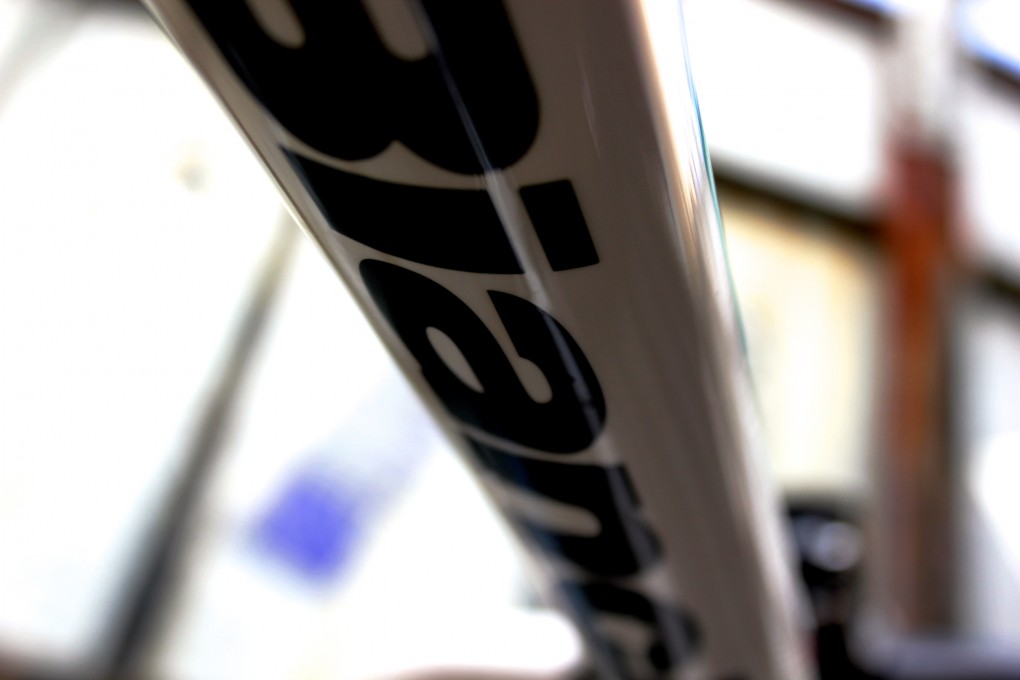
It was less effective on climbs, whether short, steep ramps or long drags. Lighter machinery, of course, would have helped, but so, we suspected, would a machine with greater zest. Its sister model, the Sempre Pro, for example, was a willing accomplice when the road turned upwards, but the Infinito CV huffed and puffed a little by comparison.
This sure-and-steady persona paid dividends on descents and in corners, however, where the Infinito CV showed itself to be devoid of nasty surprises. The unhurried steering and stable handling are likely to be qualities welcomed by those new to the sport.
Conclusion
Marketing blurb aside, we know for a fact that Juan Antonio Flecha, who debuted the machine at the 2013 Paris-Roubaix, considers the Infinito CV the best bike he has ever ridden (one of Bianchi’s former pros showed us his text message). It isn’t the best bike we’ve ridden, but it’s really rather good and Bianchi can be justifiably proud of producing a machine that satisfies the demands of the self-confessed cobbled Classics specialist.
The ‘Countervail’ vibration cancelling technology, the ingredient most likely to have influenced Flecha’s opinion given his deployment of the machine, is effective, but there are materials better suited to delivering a comfortable ride than carbon fibre, in this reviewer’s opinion, regardless of the inclusion of viscoelastic in the lay-up.
If, however, you want the more obvious benefits of a composite frame as well as comfort, chief of which is low weight, then the Infinito CV has few serious competitors, in our experience. An extended period with the carbon incarnation of Trek’s Domane, Cannondale’s Synapse, or Canyon’s hot off the press Endurace CV may sway our opinion, but for now Ridley’s Fenix is perhaps closest, another excellent machine deployed by WorldTour riders for the cobbled races, in this case, the Lotto Belisol squad of Andre Greipel and Jurgen Roelandts.
The Infinito CV is also a very attractive machine, despite occupying a space in a market typically dominated by machines for whom aesthetics are often little more than an afterthought. It is as stylish as any of Bianchi’s race-oriented models. That its appearance disguises a gentler approach to the business of road cycling is likely to be a further inducement to riders seeking all of the style but none of the discomfort sometimes associated with riding a racing bike for several hours at a time.
Price: £3,600
Size: 47, 50, 53, 55, 57, 59, 61, 63
Colour: black, white, celeste
Website: Bianchi
UK distributor: Cycleurope


